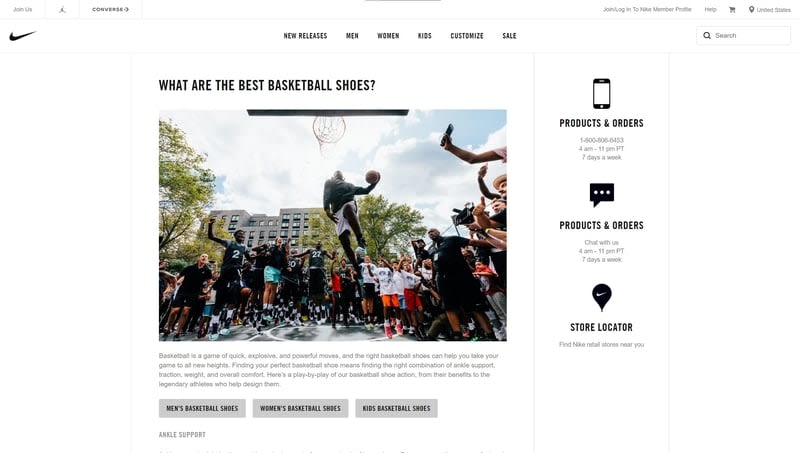Introduction
2021 is just around the corner and while it sounds cheesy, nothing will be the same ever again.
A lot of companies had to (and have to) move their businesses online because of the ongoing pandemic that makes it hard, or even impossible, to continue doing business the way it used to be.
They are forced to look for modern solutions to start all over again, as quick as possible, to win the exponentially growing race for new customers online.
Flexibility in building and adapting to online reality is probably the single most important advantage nowadays. We need to quickly try and test our ideas. If we succeed, we need to add new features, and react to rapid changes much faster than ever before to stay competitive.
The way we buy today also went crazy.
We became more and more demanding when it comes to page loading speed (in seconds!) and the experience from using websites or web shops.
That creates a perfect opportunity for companies that decided to trust modern technologies, like React.js.
It allows you to build both simple and complex applications much faster, easier, and thanks to many great frameworks that have grown upon it, you can now build blazingly fast websites to achieve much better user experience and SEO efficiency.
Let’s have a look at one of those frameworks – Next.js which enjoys growing popularity and quickly became the first choice for many big names and companies.
What is Next.js?
Next.js is a JavaScript framework that enables you to build web applications using React, and also superfast static websites.
In fact, thanks to Automatic Static Optimization "static" and "dynamic" becomes one.
This feature allows Next.js to build hybrid applications that contain both server-rendered and statically generated pages.
In other words,
Statically generated pages are still reactive: Next.js will hydrate your application client-side to give it full interactivity.
This opens us many advantages like:
- Rich User Experience (easier and faster)
- Great performance (also easier and faster)
- Rapid feature development
Next.js is widely used by the biggest and most popular companies all over the world like Netflix, Uber, Starbucks, or Twitch. It's also considered as one of the fastest-growing React frameworks, perfect to work with static sites - which was the hottest topic in the web development world lately.
What can you build with Next.js?
With Next.js you can build a number of digital products and interfaces such as:
- MVP (Minimum Viable Product)
- Web Portals
- Single web pages
- Static websites
- SaaS products
- eCommerce and retail websites
- Dashboards
- Complex and demanding web applications
- Interactive user interfaces
Next.js and User Experience

User experience plays a key role in the success (or failure) of digital businesses.
For example, if you have an online shop and you don’t take care of UX properly, it will result in:
- Losing customers
- Abandoned carts
- High bounce rate
The design is also important – if you are using themes or templates, the chances are someone out there have a similar-looking layout. It also means that you can’t build unique customer experience and improve it over time. Even if this means changing one simple thing like adding a button to the product page or deleting one.
Luckily – thanks to Next.js – you can build a fully-customised user experience. Let’s see what it really means.
- User experience freedom – you don't have to limit yourself to any plugins, templates, nor any other restrictions dictated by eCommerce or CMS platforms. It gives you total freedom to customise the frontend anyhow you need or want. It also allows you to make creative changes without any limitations.
- Adaptability and responsiveness – websites and web apps created with Next.js work on any device and adapt to any screen size or resolution. Therefore, users can access your website or web app with their favourite device.
- Short page load time – Next.js websites are super-fast because they are static so visitors will be more than satisfied with the performance.
- Data security – in case of static websites there is no direct connection to the database, dependencies, user data or other sensitive information, which makes them perfectly safe.
All of these things mentioned above make the user experience as great as it can possibly be.
But the benefits of using Next.js don't end there.
Next.js and SEO

Another big reason to choose Next.js is its SEO efficiency.
It is using Server Side Rendering (SSR) and at the same time is can be also a great Static Site Generator (SSG).
In both cases, it will help you a lot with:
- Growing organic traffic faster
- Ranking your high intent keywords higher
- Outperforming competitors easier
- Be more visible to potential customers
Next.js websites are super-fast, easy to scan and provide great user experience and that's why Google will favour them above others and rank them higher.
How else Next.js improves online businesses?
How Next.js can positively impact your business results and help you push your ideas further?
- Faster time to market – many ready-to-use components and compatibility that comes with it make building MVP much faster. Thanks to it, you can get feedback from real users quickly and make proper changes without wasting time and budget.
- Enhanced User Experience – you have total freedom to create a front-end that fully aligns with your business goals and design vision. Thanks to it, the user experience is great and unique.
- Increased organic traffic – Google loves static sites as they are fast, light and easy to scan. This translates into higher positions of these websites in search results.
- Fully omnichannel – Next.js websites and web apps work on any device, so they are accessible to everyone.
- Support on demand – since Next.js is a React-based framework, it won't be difficult to find another developer without a need of building everything from scratch once again.
- Increased conversion rate – fast loading speed, better user experience and high accessibility convert into a higher conversion. If the users are happy with the customer experience they got, they are more likely to buy and come back later for more.
- Community support - as Next.js is becoming a number one framework for many big brands, it's becoming more famous, and naturally, so the number of its contributors. That means, even if you face any issue, there will be probably a solution for that already.
What developers like about Next.js?
Regardless of whether you are looking for benefits from a business perspective or a technical one, you will find some reasons to seriously consider choosing Next.js.
If you want to build a complex and demanding application, React development nature of Next.js allows for saving a lot of time. Developers especially favor features like:
- Zero Config – Next allows you to focus on the business logic of your application instead of the application logic. And to help you, it provides automatic compilation and bundling. In other words, Next is optimised for production right from the start.
- Incremental Static Generation – it allows you to update existing pages by re-rendering them in the background as traffic comes in. So in other words, static content can become dynamic.
- Hybrid of SSR and SSG – prerender pages at build time or request time in a single project.
- TypeScript support – automatic TypeScript configuration and compilation.
- Fast Refresh – fast, live-editing experience.
- Built-in CSS support – possibility to import CSS files from a JavaScript file.
Release of Next.js 10: even more promising future
The list of Next.js benefits is growing with the next releases. In October 2020, Next 10 was introduced, together with a bunch of new features. The most important among them are:
- Built-in Image Component and Automatic Image Optimization – this feature automatically optimises images using the new next/image component
- Internationalized Routing – you can start internationalising your Next.js applications with built-in primitives
- Next.js Analytics – it allows for measuring and acting on real user performance
- Next.js Commerce – it's a perfect starter kit for building a high-performance e-commerce website
- React 17 Support – it makes Next.js fully compatible with the latest version of React
To check the full list, visit the Next.js official website.
Cons of using Next.js
The number of Next benefits is huge and clearly outweighs its cons. However, let's write them down to be as objective as it's possible.
- Development and management – the flexibility, given by Next, has its cost – continuous management. To make all desired changes properly, you will need a dedicated person with proper knowledge. The good news is that this person doesn't have to be a developer.
- Ongoing cost – since Next.js does not provide much built-in front pages, you have to create your own front-end, which will require changes from time to time. It means that you will have to pay a developer to get the job done.
- Lack of built-in state manager – so if you need a state manager in your app, you have to add Redux, MobX or something else.
- Low on plug-ins – you cannot use much of easy-to-adapt plugins.
Examples of Next.js websites



Summary
It doesn’t matter if you are planning to build a huge and demanding app to serve millions of users, nor if you are a growing webshop on Shopify. In both cases, you can use the advantages of modern web technology to make your business more efficient online.
Uplift your page speed, SEO and User Experience, and remember that technologies such as Next.js are making the web a better, cleaner, and more user-centric place. And that will always be favourable, not only by Google but, most importantly, by users.







Top comments (0)